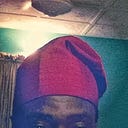What I do at Paystack
There’s no consensus on what a Head of Design does. The title is just as new as the post-YC technology scene in Nigeria and most people are the first to hold this position in their company.
Design is also an umbrella term for a variety of disciplines, so the role is a unique blend of what the company does, the person’s experience and the structure of the organisation.
But I imagine there are similarities across context. As a designer, my job is to deliver great experiences to customers. As a leader, I’m expected to positively influence the business. And as a design leader, my goal is to build a great team. If you ask me, that’s the big idea.
To go into detail, my responsibilities as Head of Design at Paystack fall into four broad categories:
- Design Operations
- Design Direction
- Branding and Comms
- User Experience Design
Operations
Paystack is constantly evolving so design work is always in flux. The team needs to be able to respond to these changes and deliver excellent work quarter after quarter. We also need to be intentional about managing our talent and developing our craft. And, for business continuity, all of this needs to happen with or without me.
Enter Design Operations. In a larger company (or far future), we might need a full-time team. But at our scale (17 designers), we opted for a working group with 2 design managers and 4 design leads. A few senior designers also stepped up to own specific functions. Essentially, about half the team juggles business deliverables and team responsibilities.
Together we refreshed our documentation, developed a new weekly calendar, redefined design roles, updated our hiring, developed a competency framework, improved performance management, started new learning and development programs, built more brand and product design systems, established a research and inclusive design process, ran a pilot talent program and developed a culture of writing and archiving.
We used the NNGroup’s DesignOps 101 framework as a guide and built out these functions one by one. By bringing the entire team into the process, we also managed to develop operations as a shared responsibility.
As Head of Design, I need to keep this engine running.
Direction
As director, it’s my job to align the team towards impact. I need to have a pulse for what customers are experiencing, what the business needs, each designer’s strengths, and juggle all of this context to guide the team towards creating valuable work that moves everyone forward.
The other part is maintaining a high level of craft. As top designer, I’m ultimately responsible for the experience of the Paystack product and brand. If we get it right, every design outcome should be just as great as the most skilled person on the team would produce. This requires a culture of continuous feedback, adaptive systems and honest critique that encourages a collective standard of quality over individual excellence.
Ergo, my role as director is to promote collaborative practice by encouraging positive team values, shaping the design roadmap, aligning design leads, inventing production systems, refining design processes, promoting continuous feedback, sharing good ideas, implementing co-working sessions, organising fireside chats etc.
Branding
I also run the Paystack Design Studio, an in-house production studio for branding and marketing communication. Well, technically. For the most part, the studio runs itself and I manage by proxy.
Every colour, image or website you experience as Paystack is made by this team of seven. We produce graphic and motion design assets for social media and marketing campaigns. We also design, build and maintain all Paystack websites, including the content management systems.
The studio relies a lot on local collaboration. We actively look for opportunities to work with independent creators in regions where the company operates.
UX Design
Everyone else is a UX designer, including myself. UX designers are assigned to a product team with PMs, engineers and co. These teams are tasked with either launching a new product, maintaining an existing one or serving a select group of customers.
UX Design covers a lot of disciplines. You need to understand the user need, synthesise a solution, communicate it clearly, design a prototype, test the solution, refine the build, set goals, measure performance and repeat the loop until the need is met or the desired experience is delivered. It requires a lot of commitment and iteration. At any point I’m usually focused on building out the UX for one product or feature while I rely on direction and feedback to influence outcomes for everyone else.
UXD also extends beyond production into distribution and maintenance. I work with teams like Marketing and Revenue to take products to market. I also work with PMs and Data Analysts to proactively study data and get feedback from users to understand what’s working and what to improve.
Of all my responsibilities, I enjoy this one the most. It’s a continuous act of service that also involves a lot of invention.
I wrote this essay for designers at Paystack but then decided to share it publicly as a contribution to the community of self-taught design leaders figuring it out one quarter at a time.
Also, the recent restructuring affected a good number of people on my team who worked really hard to build this structure we have today. I hope you feel proud of your work. Thank you for everything!
💙
